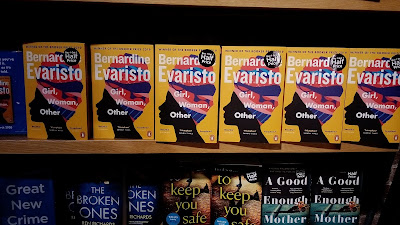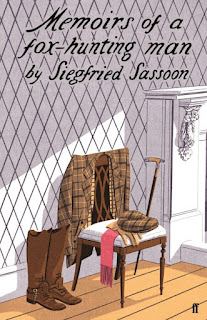Members of the Human Family
Everyone fantasises about time travel. In Girl, Woman, Other, Bernardine Evaristo rushes the reader through multiple temporal
spaces, blending twentieth-century British history with the life-stories and the experiences of twelve black women.
Race and gender both surround the novel’s sparse-knit cast. Amma’s story kick-starts some main ideas into action. As a black lesbian living in Thatcher’s Britain, she is at loggerheads with her world. The social-political concerns of the 1980s cast her into a tenement squat, living among London’s subcultural milieu – namely, punks, gays, and radicals. Fast forward to the novel’s end and the reader dives into the year 1905. Grace, a black orphan in Newcastle, works her way to the top of the social ladder (despite the racial viewpoints of her peers). Such narrative splits allow Evaristo to capture a wide-angled view of race and gender, making the case that both are historically driven concepts, changing according to time and place.
Race and gender both surround the novel’s sparse-knit cast. Amma’s story kick-starts some main ideas into action. As a black lesbian living in Thatcher’s Britain, she is at loggerheads with her world. The social-political concerns of the 1980s cast her into a tenement squat, living among London’s subcultural milieu – namely, punks, gays, and radicals. Fast forward to the novel’s end and the reader dives into the year 1905. Grace, a black orphan in Newcastle, works her way to the top of the social ladder (despite the racial viewpoints of her peers). Such narrative splits allow Evaristo to capture a wide-angled view of race and gender, making the case that both are historically driven concepts, changing according to time and place.
Evaristo writes in verse fiction, which
gives Girl, Woman, Other a sense of heightened emotional clarity. This
stylistic formula uses lineation to separate clauses and individual paragraphs,
singling out certain words as the narrative progresses. Typographically
speaking, the result looks and feels like poetry. (In terms of surprise and
anticipation, verse fiction has the same effect as traditional lyrics.)
Consider, for instance, an extract from chapter one. Amma’s best friend and
fellow lesbian, Dominique, escapes from a toxic relationship and stumbles
across some hard-hitting news:
hearing of her former lover’s death, Dominique . . . felt
released, sad, too, that Nzinga’s life really had been one of abandonment
and she’d not been capable of seeing that fault [which], as
an adult, lay with her (111)
Evaristo’s choice to write without
full stops - to separating single clauses into lines - adds an extra level of transition and
juxtaposition to the narrative. In terms of each character's development, these two concepts (i.e., transition, juxtaposition) are important, as they grow into themselves, discovering their true
identities.
Throughout Girl, Woman, Other, we
encounter various personalities. The novel’s title reflects its content with an
iconic flair as Evaristo at once writes about the included and excluded: conformists and rebels, girls, women, and others.
For instance, Megan/Morgan’s story allows Evaristo to tap into the roots of the various issues the trans community currently confronts. At a young age, Megan ‘abandoned all pretence at conforming’ and blossoms into someone who self-defines as gender free (312). She names herself ‘Morgan’, becoming a familial castaway, refusing to conform to the presumptions of ‘society’s expectations’ in a quest for truth and discovery.
Evaristo’s inclusion of everywoman’s story stretches the reader’s empathy skills, displaying the tensions and freedoms of someone at odds with heteronormative lives. In the book’s frontispiece, she dedicates Girl, Woman, Other to ‘the sisters & the sistahs & the sistren … + members of the human family’. This is the novel as project – a fictional enterprise, focusing on the experiences of “others” to elevate inclusiveness as a concept.
For instance, Megan/Morgan’s story allows Evaristo to tap into the roots of the various issues the trans community currently confronts. At a young age, Megan ‘abandoned all pretence at conforming’ and blossoms into someone who self-defines as gender free (312). She names herself ‘Morgan’, becoming a familial castaway, refusing to conform to the presumptions of ‘society’s expectations’ in a quest for truth and discovery.
Evaristo’s inclusion of everywoman’s story stretches the reader’s empathy skills, displaying the tensions and freedoms of someone at odds with heteronormative lives. In the book’s frontispiece, she dedicates Girl, Woman, Other to ‘the sisters & the sistahs & the sistren … + members of the human family’. This is the novel as project – a fictional enterprise, focusing on the experiences of “others” to elevate inclusiveness as a concept.
As such, Evaristo explores intersectionality (the overlap of race and gender,
creating an interdependent system of disadvantage), focusing on intersectionality's more inclusive moments. Though considerably older, Amma, a second-wave feminist, can still
relate to the struggles of activists today. In the novel’s final chapter, we see
Dominique and Anna discussing the glory days of their media harassment, when the popular
press ‘vilified’ feminism, turning a ‘generation of women away from their own
liberation because nobody wanted to be denounced as one’ (436). They arrive at
the subject of ‘trans troublemakers’ who Dominque complains about. When she
announced that her own literary festival was ‘for women-born-women’ only, activists
accused her of being ‘transphobic’ (437). She rejected the charge and thought
the Twitter onslaughts ‘unbearable’. Amma intervenes with a sobering response.
Dom, you’re so funny, er,
troublemakers? protest? remind you of anyone? we’d have given people hell on
Twitter if it was around when we were young, can you imagine? and the trans
community is entitled to fight for their rights, you need to be more
open-minded on that score or you’ll risk becoming irrelevant (437).
Both Amma and Dominique realise that,
at one point in time, they were outsiders too – intersectionally both black and
feminist at a time when the prevailing discourse excluded their voices from
mainstream discussions.
In sum, Girl, Woman, Other is about feelings of togetherness
- that is, uniformity despite our differences. Penelope Fitzgerald is the only white
character in the novel with a narrative. But the novel’s epilogue reveals a
twist in her genes: she has black heritage. Middle-class and prejudiced,
Penelope receives a DNA test in the post and experiences a complete overhaul in
everything she has ever believed in. At eighty years old, she journeys out to
find her biological mother. The novel ends with a heart-warming scene. Penelope arrives in Newcastle, witnessing her mother’s dark skin. Her thought
processes reveal the novel’s overall message. ‘Who cares about her colour?’ Ultimately, ‘this is about being/together’ (453).
Source:
Girl,
Woman, Other. By
Bernardine Evaristo. Pp 453. London: Hamish Hamilton, 2019. £16.99. ISBN
978-0-241-36490-1.
 |
| Girl, Woman, Other displayed in London Bridge station. Author's photograph, 2020. |


Comments
Post a Comment